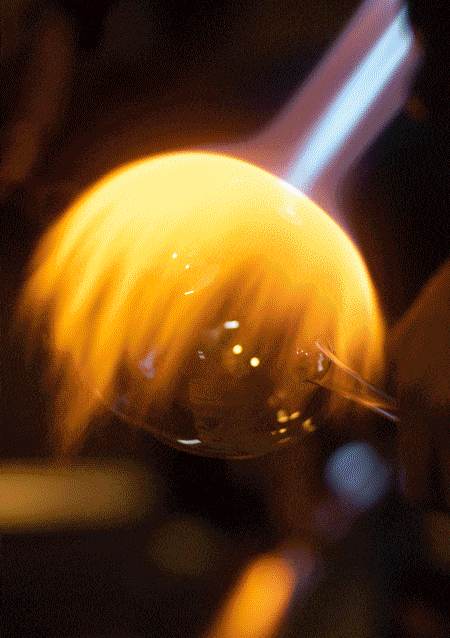
At Heart …among delicacies and festivals

Continua en la historia
 Desliza a la izquierda para continuar
Desliza a la izquierda para continuar

 Besides the beauty of its streets and surroundings, the heritage of this Pueblo Mágico does not leave behind its gastronomy, authentic Puebla cuisine with homegrown ingredients that reflects, in every bite, its particular history and heritage.
Besides the beauty of its streets and surroundings, the heritage of this Pueblo Mágico does not leave behind its gastronomy, authentic Puebla cuisine with homegrown ingredients that reflects, in every bite, its particular history and heritage.
.

◉◉◉◉
FESTIVAL DE LA BARBACOA Y EL PULQUE
◖This is one of the most awaited festivals by all those who attend every year to literally “lick their fingers”: the Festival de la Barbacoa y el Pulque. Two great ones together.
••••●•••••●••••
The Festival de la Barbacoa y el Pulque Chignahuapan takes place during a whole week in July, as part of the Fiestas Patronales of Santiago Apóstol.
The stages change, but not the people’s enthusiasm, always festive and tireless.

 At its best
At its best
The barbecue in Chignahuapan is prepared in the traditional style, that is to say, a hole is prepared in the ground, heated with wood embers and stones are placed to cook at high temperatures for at least 8 hours. On these stones is placed the meat to be cooked, wrapped with maguey leaves, for about 10 hours or until the next morning.
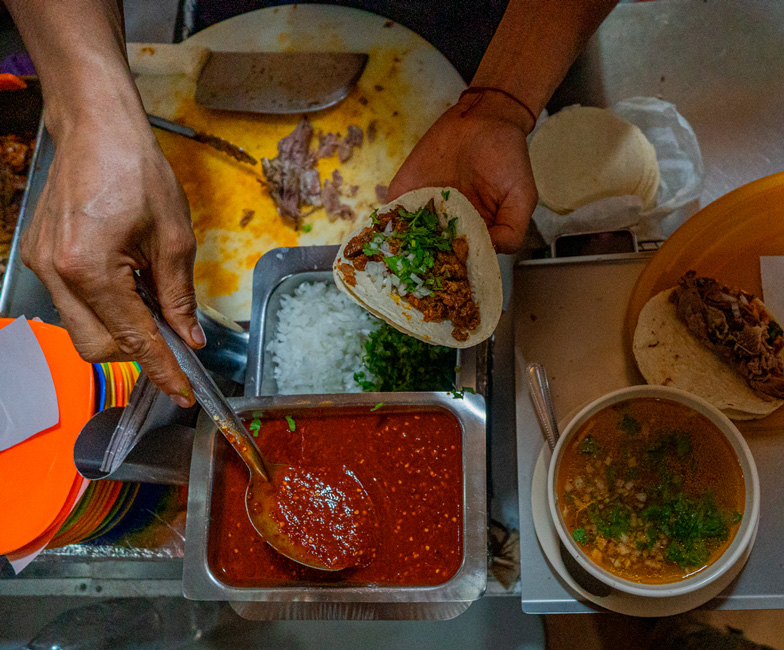
.
.
◉◉◉◉
THE FESTIVAL AND ITS ACTIVITIES
◖The event, besides being delicious, always offers entertainment for the whole family, throughout the day, such as artistic and musical presentations, and gastronomic samples with delicious regional dishes and snacks
••••●•••••●••••
Highlights include the Tlacoyo gastronomic show or the opening of the pulquería and snacks enlivened by a musical group. Children and adults love the hopscotch tournament, the traditional horseback riding-procession with the image of Santiago Apóstol, the rodeo, the dance, and much more.
 Un taquito all year round
Un taquito all year round
If you are visiting in another month, there is no need to worry, because on weekends, this delicacy can be enjoyed at: Barbacoa Don Carmelo, Barbacoa de borrego Lucerito, Barbacoa La Quinta, Barbacoas Nava`s, Barbacoa Trejos and Tu Casa, among others.

.
◉◉◉◉
DO THE SCORPION TEST ANY DAY OF THE YEAR
◖Only experts know that the scorpion test is extremely simple, when you finish your first glass of pulque do not drink it completely, just take the glass off the table and throw it quickly to the floor, then the trail of the spurt will form the figure of the scorpion.
With this it is said that you can check the good ferment of the drink by its consistency and thickness.
Come to Hacienda Amoltepec any time of the year to learn all about its elaboration and to do the “prueba del alacrán”.
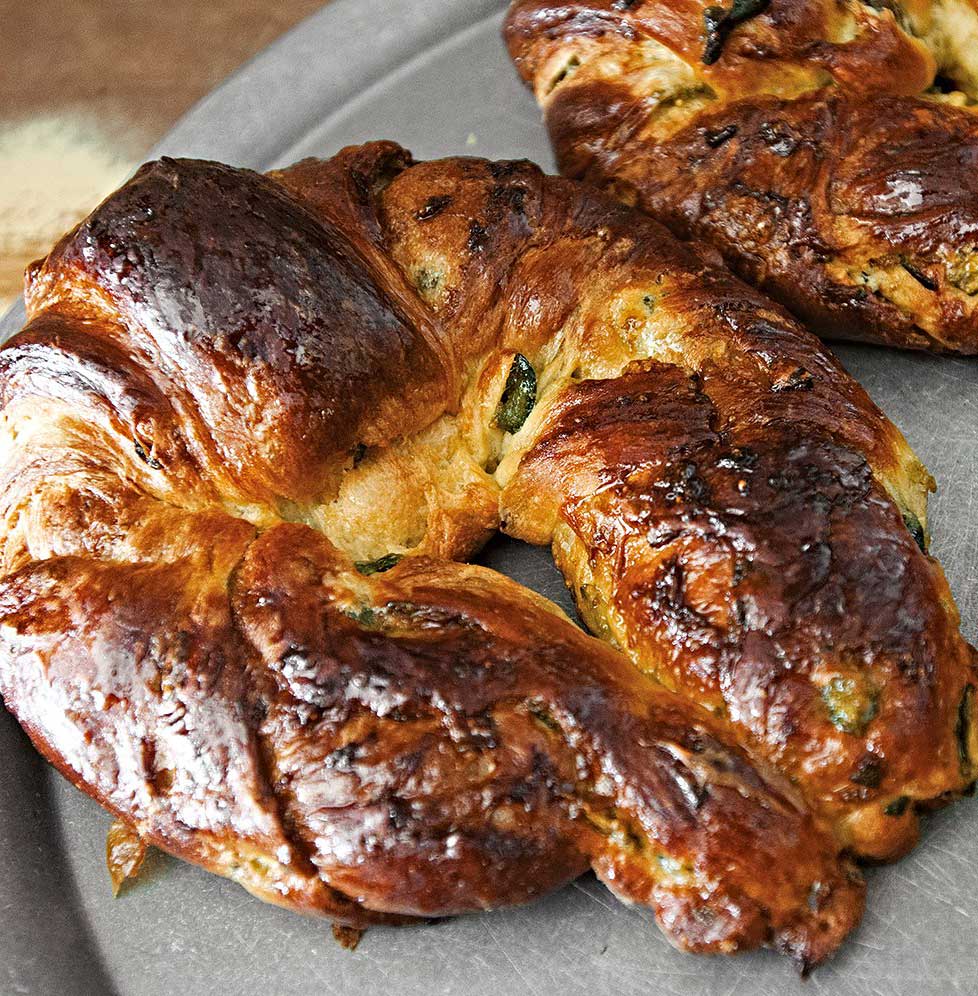
.
.
◉◉◉◉
FOR YOU TO FALL IN LOVE: FIG BREAD
◖Almohadas, burras, morelianas, picaditas… What does that sound like? Well, nothing less than delicacies from the traditional ovens of Chignahuapan. Ah, but there is a king between tray and tray, the aromatic cuerno de higo.
••••●•••••●••••
All of Puebla has ideal conditions for the development of the Ficus carica, common name of the fig tree, and in the microcosm of Chignahuapan it is even more so, which is why they make delicious homemade sweets and desserts, hence those delicious cuernos sprinkled with sweet little pieces of fig that are best bought by the dozen..
 It is also possible to find the typical cheese bread that Chignahuapan shares with Zacatlán and don’t forget to ask for the famous “pan de cuelga”, which used to be given as a gift as a synonym of engagement.
It is also possible to find the typical cheese bread that Chignahuapan shares with Zacatlán and don’t forget to ask for the famous “pan de cuelga”, which used to be given as a gift as a synonym of engagement.
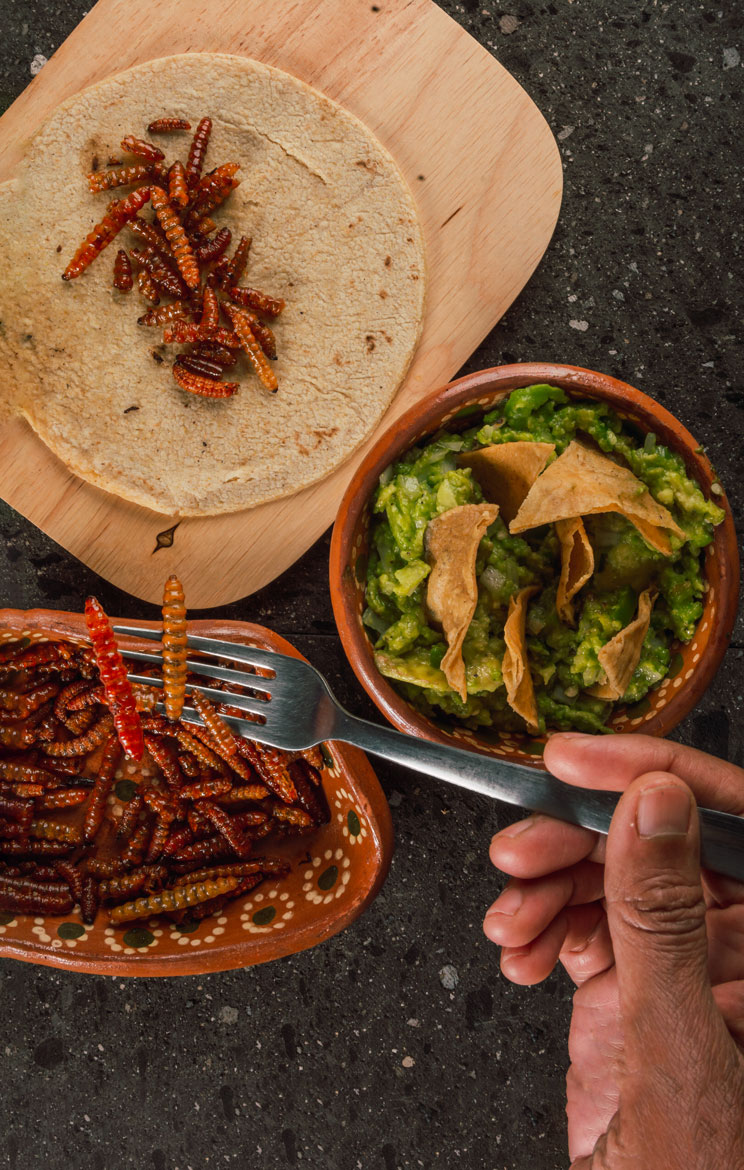
.
◉◉◉◉
SALSA WITH CHINICUILES: THE QUEEN OF SALSA
◖This is a true “connoisseur’s alert”. Since Chignahuapan has extensive and productive agave fields, from which pulque and mezcal are produced, chinicuiles are another gift of this land. They are consumed in a variety of delicious ways, on the comal, fried, in a mixiote or in salsa, which is a must in this land.
••••●•••••●••••
This delicacy goes very well with bean tlacoyos or a quelites taco. Ask for it at the tables of the most typical restaurants such as Antojitos Dona Chuy (on Paseo de la Laguna), Rincón Mexicano Restaurante (downtown), or Restaurante El Veneno, Portal (in front of Parque bajo los Portales).
◉◉◉◉
TLACOYOS: A FAVORITE AT ANY TIME
◖The seal of Puebla’s cuisine, one of the favorites in the whole country, is present at every step in this Magical Town. Among the favorite snacks of all Mexicans are the tlacoyos (tlayoyos in other parts of Puebla).
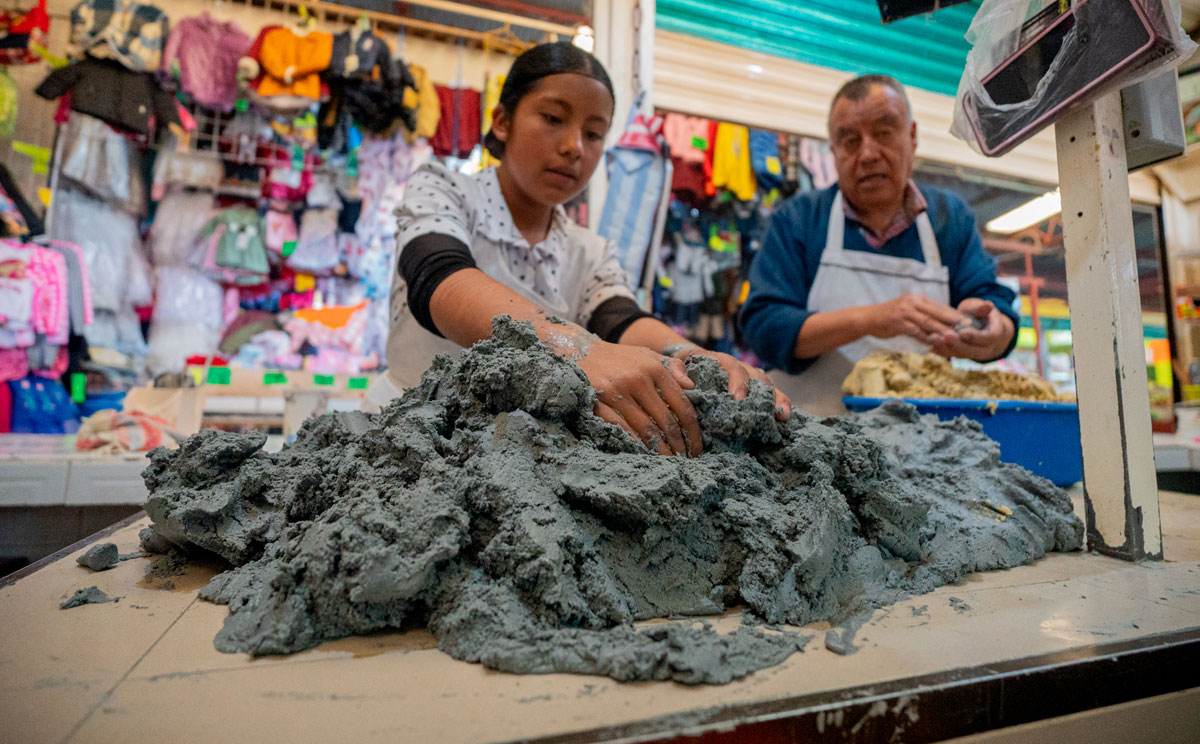
To the eyes of foreigners it seems that they look and taste the same everywhere, but nothing could be further from the truth, because in every corner of Mexico they taste different, since the flavor depends on the type of corn, the nixtamalization, the hand to “tortear” the dough and not to mention the seasoning of the fillings.

••••●•••••●••••
The comal and the firewood are also fundamental. In Chignahuapan, around the main square, you can taste various typical dishes and of course you cannot miss the tlacoyos. You can also buy them in the market or take them to go in the tortillerías that you will find in the streets.
The traditional ones are filled with beans and have salsa, chopped onion and fresh cheese. A delight.
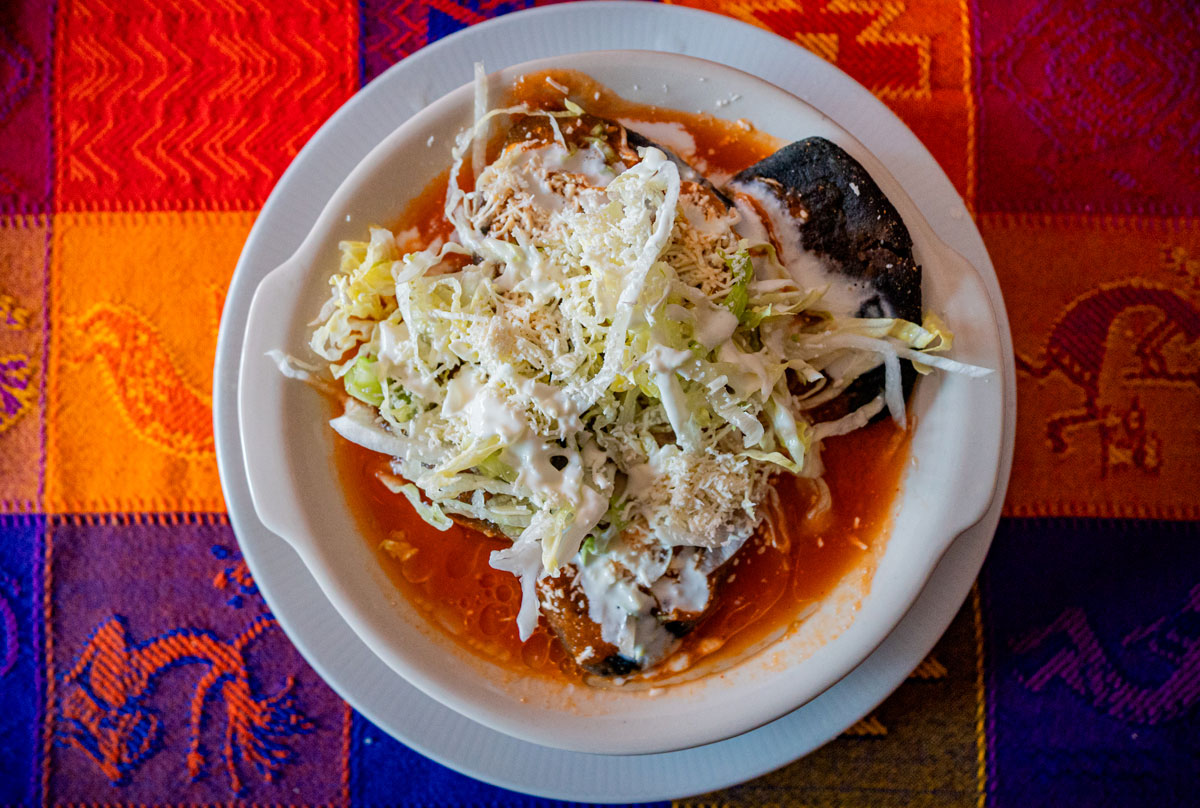
 The Meaning
The Meaning
Its name comes from the Nahuatl word tlaoyo, which means “shelled corn patty”.

.
.
◉◉◉◉
MEZCAL: ANOTHER GIFT FROM THE AGAVE
◖Few people know that Puebla has mezcal with a Denomination of Origin. The Mexican Institute of Industrial Property (IMPI) approved the inclusion of Puebla and 115 of its municipalities in the Denomination of Origin of Mezcal (DO) since 2015.
Mezcal has been produced in the state since colonial times, achieving important productions at the end of the 19th and 20th centuries. There are around 70 mezcal producers in the state.
••••●•••••●••••
The indigenous people, throughout history, have bequeathed us beautiful traditions, among them the drinks. Mezcal is one of the most symbolic and mystical. In this Pueblo Mágico they give great power to the agave and elaborate it with respect and affection.
There is blanco of silvestre agave, tobalá, cupreata, salmeada and espadín, 100% handmade. From this, there are brands that you should not miss, such as Mezcal 9 Aguas and Mezcal La Mexicana.
Do a tasting in restaurants throughout the Pueblo Mágico!
 For all good things…Mezcal
For all good things…Mezcal
Some of the municipalities recognized in the production of mezcal in the state are: Acajete, Acatlán de Osorio, Acatzingo, Chiautla, Chigmecatitlan, Chignahuapan, Izúcar de Matamoros, Tehuacán, Tepemaxalco and Tepeojuma.
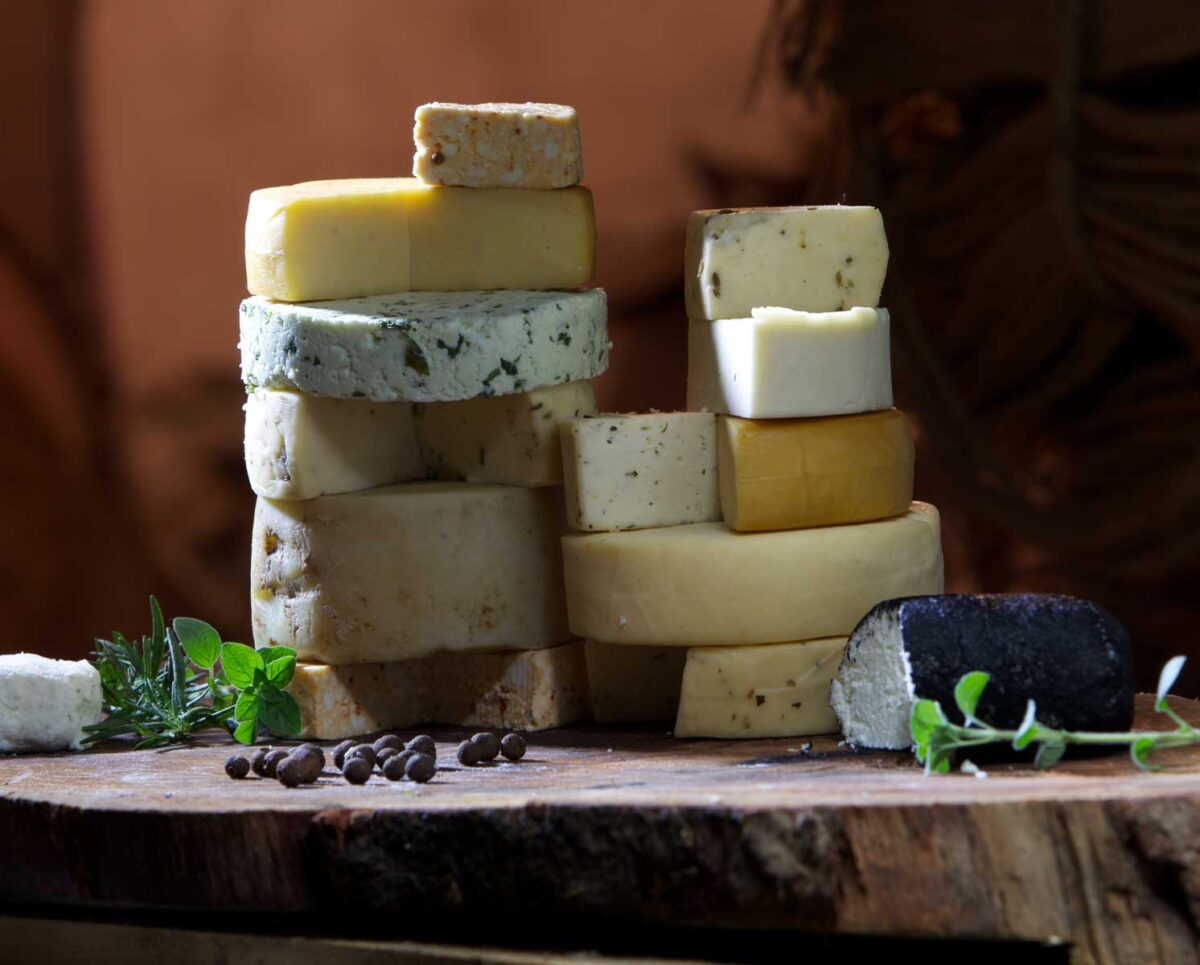
◉◉◉◉
FOR ENDLESS SNACKING… A QUESITO
◖Cheese making in Chignahuapan is a highly appreciated artisanal technique. There is a great variety of cheeses by tradition throughout the state of Puebla and those produced in this Magical Town stand out for their freshness and flavor, for their ingredients, techniques and processes.
Mostly cow’s milk is used, but goat’s milk are also used. There are fresh, semi-cured, cured and old.

••••●•••••●••••
Among the favorites of the locals and those proudly offered to visitors are the botanero, gourmet and blue cheese, in which the elaboration process involves Penicilium type molds that will give the cheese a characteristic texture and flavor—the external and internal molds give it a symbol of quality.

These delicacies can be tasted in restaurants throughout the Pueblo Mágico and in cheese shops such as Saltilac, La Cabrita Gourmet, Quesos, Vinos y Licores “La Especial”, Cremería Yair, and Casa Esmeralda (with a subway cellar) to take home.

.
.
◉◉◉◉
MUSHROOM OF ALL COLORS AND FLAVORS
◖The region is rich in mushrooms (up to 30 species have been identified) and rituals have been practiced with them, but edible mushrooms are also deeply rooted in the popular and traditional gastronomy of Chignahuapan.
••••●•••••●••••
On the highway to Chignahuapan you will find a place called El Paradero, where they sell aromatic and delicious dishes made with mushrooms. There you will find “carnita de puerco con hongos”, “caldo de pollo con hongos”, “hongo con pancita”, quesadillas with ten varieties of mushrooms, tamales stuffed with mushrooms. Salsas and moles are also made with this healthy food that the earth gifts to Mexico.
You can also take home, in season, buckets offered by the side of the road. The “naranjitas” (Amanita caesarea) are among the most expensive and appreciated, around 150 MXN. Also ask for the pancita or cemita (Boletus edulis) for 90 MXN, or the white ear mushrooms (Russula brevipes) and corals (Ramaria spp.).
 For the Mexicans, the patron saint of mushrooms was the god Nanacatzin, the pre-Hispanic deity who made them grow.
For the Mexicans, the patron saint of mushrooms was the god Nanacatzin, the pre-Hispanic deity who made them grow.




